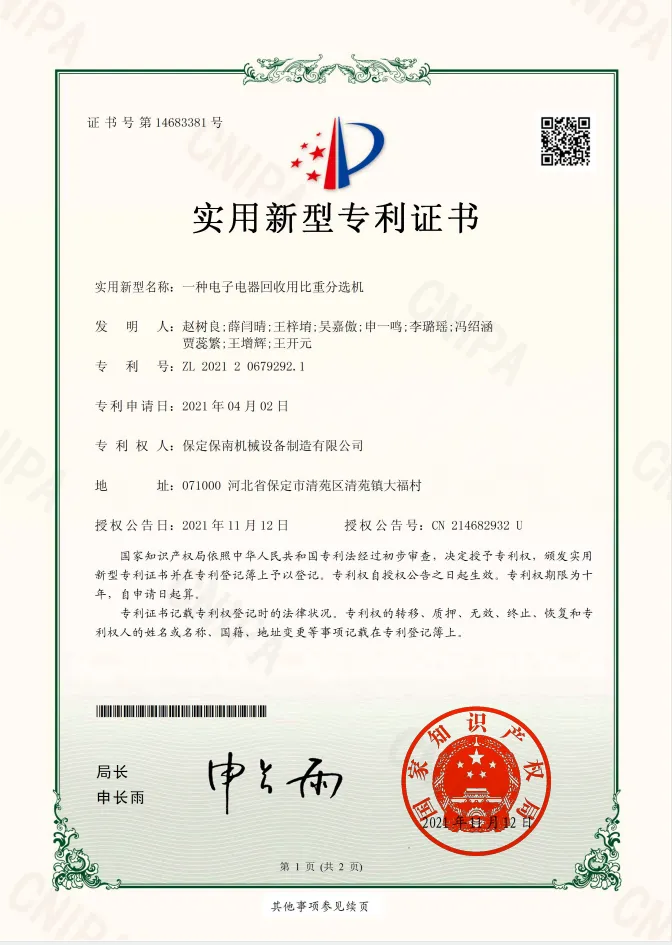
10 月 . 07, 2024 22:56 Back to list
Eddy Current Recycling A Revolution in Material Recovery
Eddy current recycling is an innovative and highly effective method used to separate and recover non-ferrous metals from waste materials. This technology leverages the principles of electromagnetism to facilitate the recycling process, making it an essential component in modern waste management and environmental sustainability efforts.
The principle behind eddy current recycling is rooted in Faraday's law of electromagnetic induction. When a conductor, such as aluminum or copper, is exposed to a changing magnetic field, it induces circulating currents, known as eddy currents, within the material. These currents generate their own magnetic fields, which can be manipulated to separate the metal from non-metallic substances in a waste stream. This process enhances the recovery of valuable materials from what would otherwise be discarded waste, helping to reduce the amount of material going to landfills.
One of the most significant advantages of eddy current recycling is its ability to effectively separate non-ferrous metals from other waste materials, including plastics and ferrous metals. In a typical recycling facility, after the initial sorting of scrap, the eddy current separator comes into play. This device consists of a rotor with a magnetic field that spins at high speeds. As non-ferrous metals pass through, they are propelled away from non-metallic materials due to the repulsion created by the eddy currents. This method not only speeds up the recycling process but also increases the purity of the recovered metals.

The environmental benefits of eddy current recycling are vast. By recovering metals such as aluminum and copper, we reduce the need for mining and extraction of raw materials, which is often a highly energy-intensive process. Additionally, recycling metals consumes significantly less energy compared to producing new metals, thereby decreasing carbon emissions associated with metal production. Furthermore, efficient recycling practices help conserve finite natural resources, ensuring they can be used sustainably.
Eddy current recycling also plays a critical role in the management of electronic waste (e-waste). Many electronic devices contain valuable metals that can be reclaimed through this process. As the world generates increasing amounts of e-waste, the importance of recovering these materials responsibly cannot be overstated. By employing eddy current technology, recyclers can effectively recover metals from old gadgets, contributing to a circular economy where materials are reused rather than disposed of.
The future of eddy current recycling looks promising. As technology advances, improvements in separation efficiency and the development of new applications are anticipated. Innovations in sensor technology and artificial intelligence may further enhance the sorting process, making recycling operations even more efficient and effective.
In conclusion, eddy current recycling represents a significant advancement in material recovery technology. By enhancing the efficiency of metal separation and contributing to environmental sustainability, this method plays a vital role in modern recycling efforts. As we continue to face global challenges related to waste management and resource conservation, eddy current recycling stands out as a key solution, demonstrating the potential for innovation to drive positive change in our approach to waste and resource management.
Latest news
Unveiling the Power of Eddy Current Separator
NewsSep.25,2024
Transform Your Home Recyclin:home metal shredder
NewsSep.25,2024
The Future of Waste Management with Recycling Line Picker
NewsSep.25,2024
The Benefits of a Metal Recycling Plant
NewsSep.25,2024
Revolutionize Material Separation with Onwang Technology
NewsSep.25,2024
Innovative Waste Management: Unveiling the MSW Sorting Plant
NewsSep.25,2024